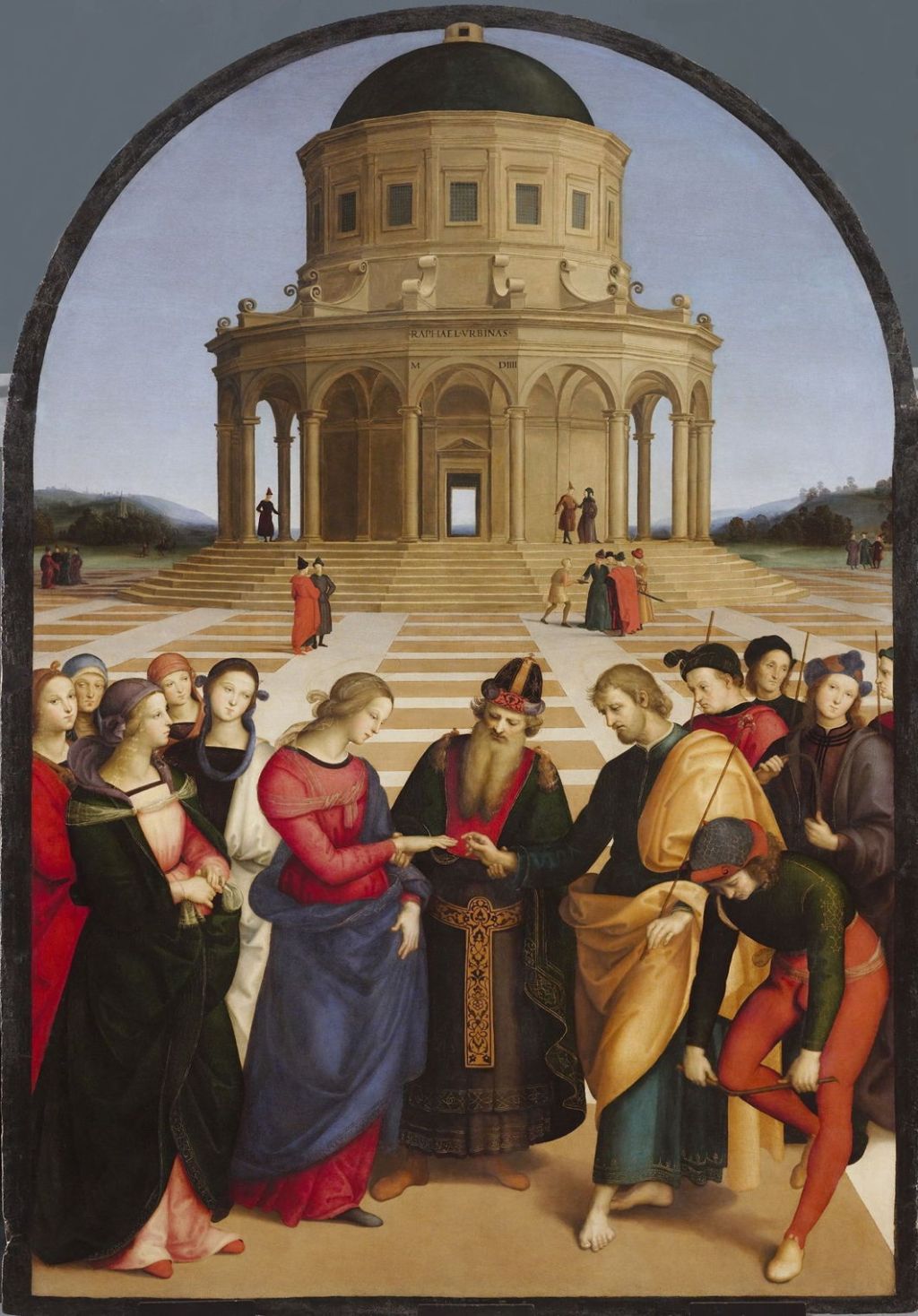In the first article in this series, I looked in detail at the processes involved in the production of Masaccio’s huge fresco The Holy Trinity, which were dominated by crafts and craftsmanship rather than artistic creativity. This article looks at the evolution of the classical method for making paintings, from the Middle Ages through to the end of the Renaissance.
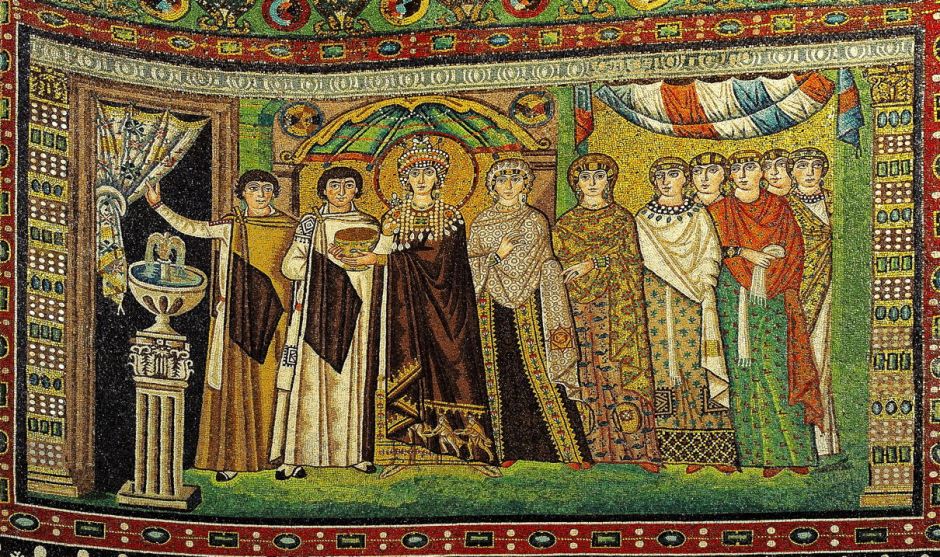
Before the Renaissance, visual art was very different. Figures generally had fixed forms, faces were neutral and expressionless, and media distanced the artist from the work of art they were making. It’s easy to see them as formulaic, and lacking artistic inspiration, but that largely comes from our preconceptions and the modern eye.
This exquisite mosaic may have been painstakingly assembled from small fragments of stone, but its design is far from being repetitive or routine. Take the figure at the right, dressed in red and green. Prescriptive colour doctrines forbade that until the Impressionists revelled in the combination, yet here it is thirteen hundred years earlier. Not content with a single figure, it’s echoed in decorations at the top of the mosaic too, and in the cupola above Theodora herself.
There’s a great deal more too. Faces are stereotypes, but look at the folds in the garments and their decorative patterns, the tied up curtain at the left, and the fountain below it. These are all areas outside the immutable holy elements, in which the artist who designed this was allowed freedom.

Duccio’s marvellous panel painting of The Raising of Lazarus (1310–11) tells the popular story from the Gospel of John, in which Jesus brought back to life one Lazarus of Bethany four days after his burial. His composition, which uses multiplex narrative, is ingenious and integrates several scenes into a coherent whole.
Lazarus’ two sisters are shown pleading with Christ to attend their ailing brother, reminding the viewer of the start of the story, but at the right the stone has been removed from the tomb, and Lazarus appears alive again. Duccio humorously shows some of the attending crowd holding their noses in expectation of the smell of his rotting corpse, the sort of olfactory experience which was common at the time.
Their faces are iconic in the sense that they’re devoid of the reality of expressing emotion. The landscape behind might appear assembled from clip-art, but its symbols are easy to read.
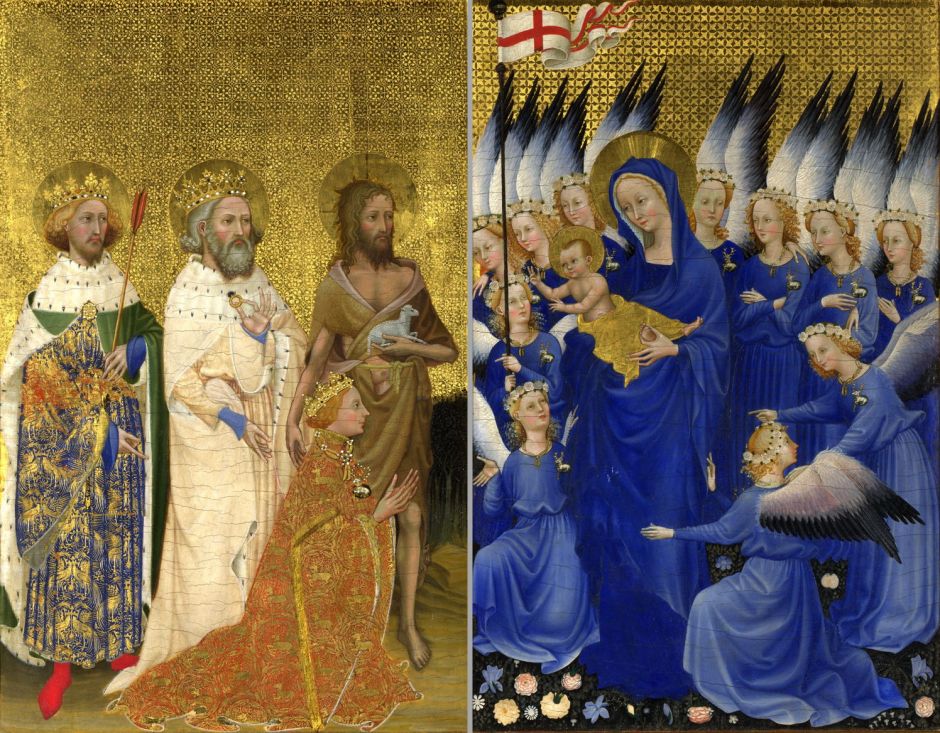
In some cases, it’s easy to become overwhelmed by the signs of craftsmanship and miss the artistic content altogether. This luxury object, The Wilton Diptych, was intended from the outset for the personal devotions of a monarch, or someone of close rank and stature. Its interior shows on the left, King Richard II (its most probable owner) kneeling as he is presented by the three saints, Saint John the Baptist (carrying the Lamb of God), Saint Edward the Confessor (holding the ring he gave to Saint John the Evangelist), and Saint Edmund (holding an arrow from his martyrdom). On the right is the Virgin Mary holding the Christ Child with a throng of eleven angels, one of whom bears the standard of the Cross of Saint John.
It was painted on two small panels of oak wood using egg tempera, in a workshop which was clearly very experienced at making such works. Looking beyond its beautifully patterned gold leaf there’s extensive use of rhythm in the composition of both its panels. This runs down into details such as the the deer symbols emblazoned on each of the angels’ blue gowns. Unlike the regimented faces, each of those gowns has been draped and painted individually.
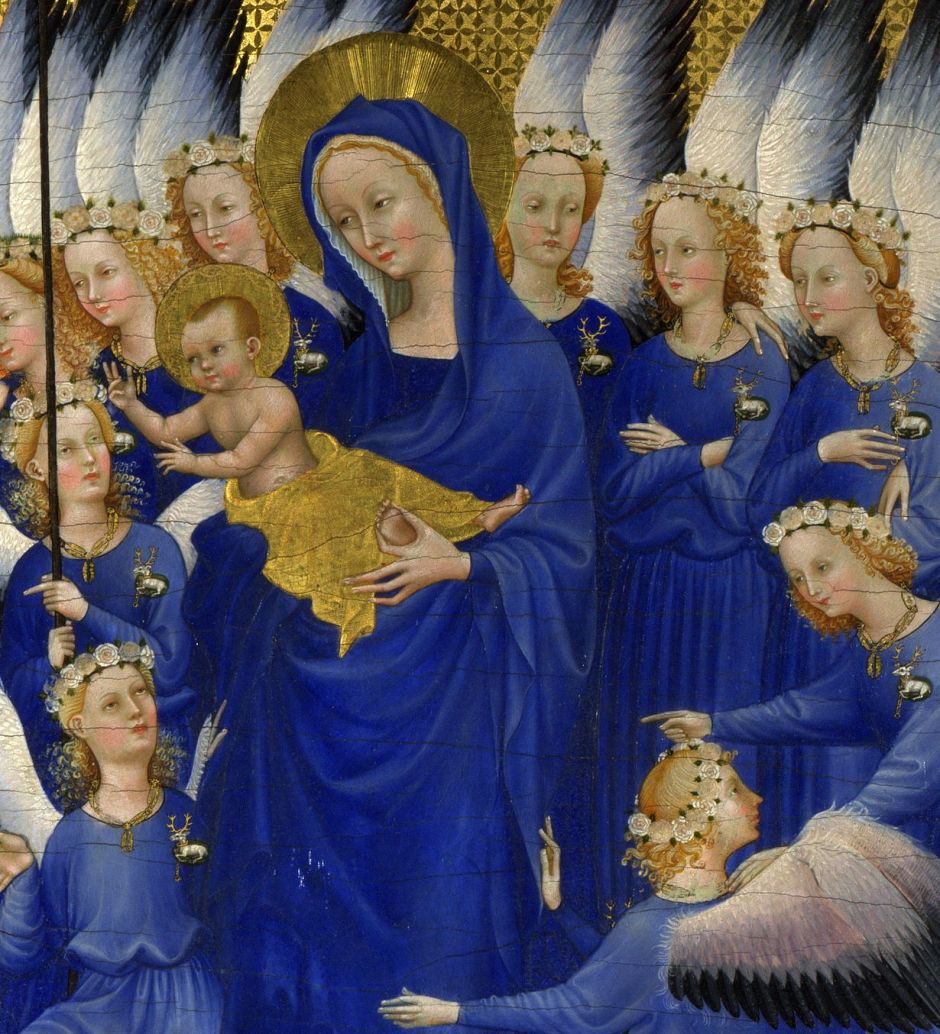
That diptych is painted using egg tempera, a medium best-suited to iconic images, although more recently many painters have developed its techniques to increase its expressiveness and even make its use more spontaneous.
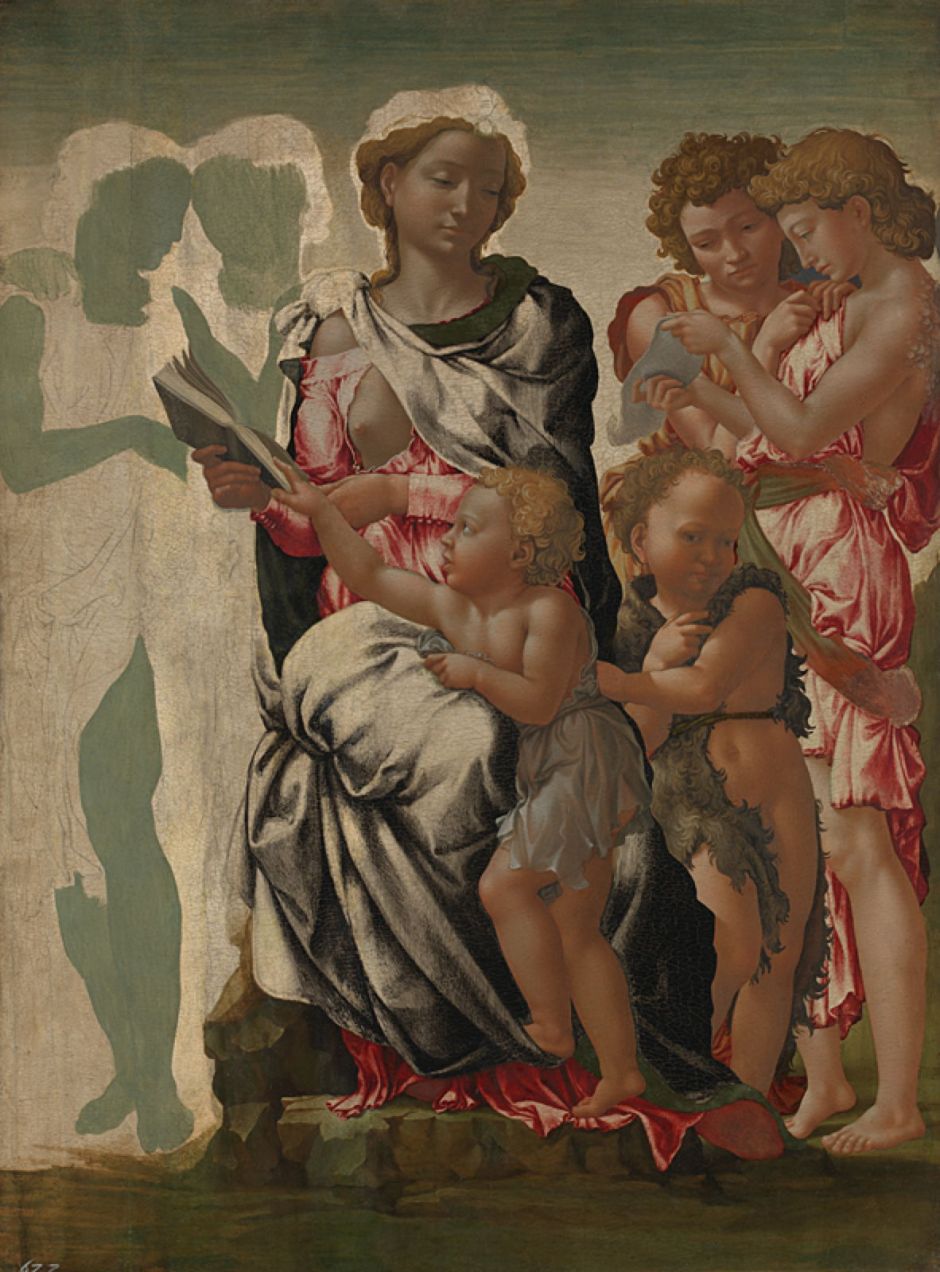
Michelangelo’s abandoned ‘Manchester Madonna’ shows the slow process of painting in egg tempera well, with different sections ranging from a terre verte underlayer and bare gesso ground through to fully-modelled flesh.
Egg tempera paint was applied using fine brushes and a slow build-up of hatched strokes. Once applied, the paint becomes near-dry in a matter of seconds, and there is little or no opportunity for correction or reworking, particularly when working in such fine detail. As thin layers were built up, glazes were applied to enrich the colours and optical properties.
Greatest artistic freedom was mainly exercised early in the process of making a painting, using media which are more ephemeral. Their use is shown well in one of Leonardo da Vinci’s abandoned works, The Adoration of the Magi, which he worked on between about 1478-82.

This early design study has many close similarities with the painting that he abandoned in 1482, although he changed his mind about the ruins in the background and added a prominent tree to the right of the Virgin Mary.

That was probably followed by this perspective study. The ruins shown in the painting below were thus part of a complete building which Leonardo imagined and projected meticulously before excerpting those fragments which were to be retained in the final work. This may have been intended to represent the palace of King David, which referred to Christ’s lineage.
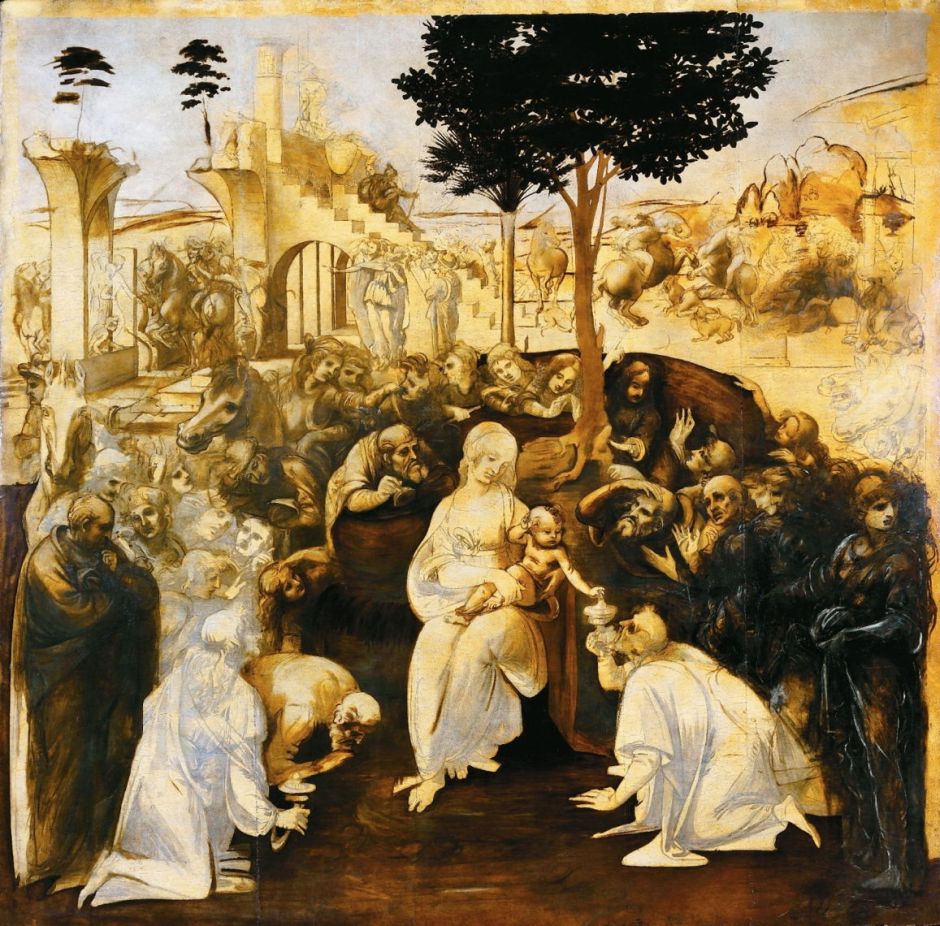
At nearly 2.5 metres in each dimension, the finished painting would have been one of his largest and most ambitious works to date, but probably had to be abandoned when he left Florence in 1482.
Linear perspective projection came into vogue, and many of the masters featured contemporary buildings in the background which enabled them to show their geometric prowess.
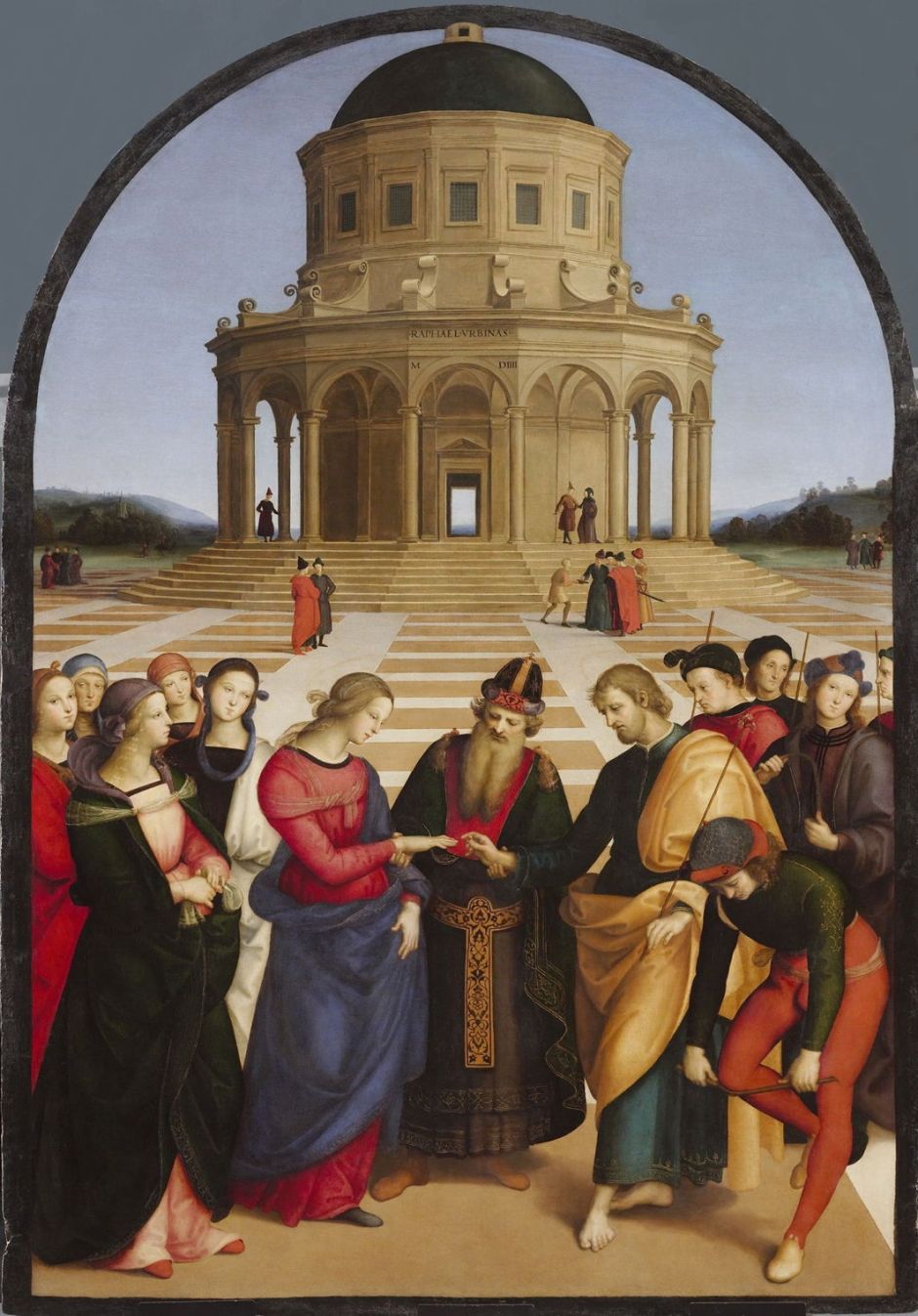
By 1504, when Raphael painted The Marriage of the Virgin, known by its Italian name of Il Sposalizio (‘the marriage’), his style was becoming more his own, and the building a demonstration of his geometric skill.
Another surviving example of the creative process is in Fra Bartolomeo’s development of background detail for his Nativity of 1504-07.
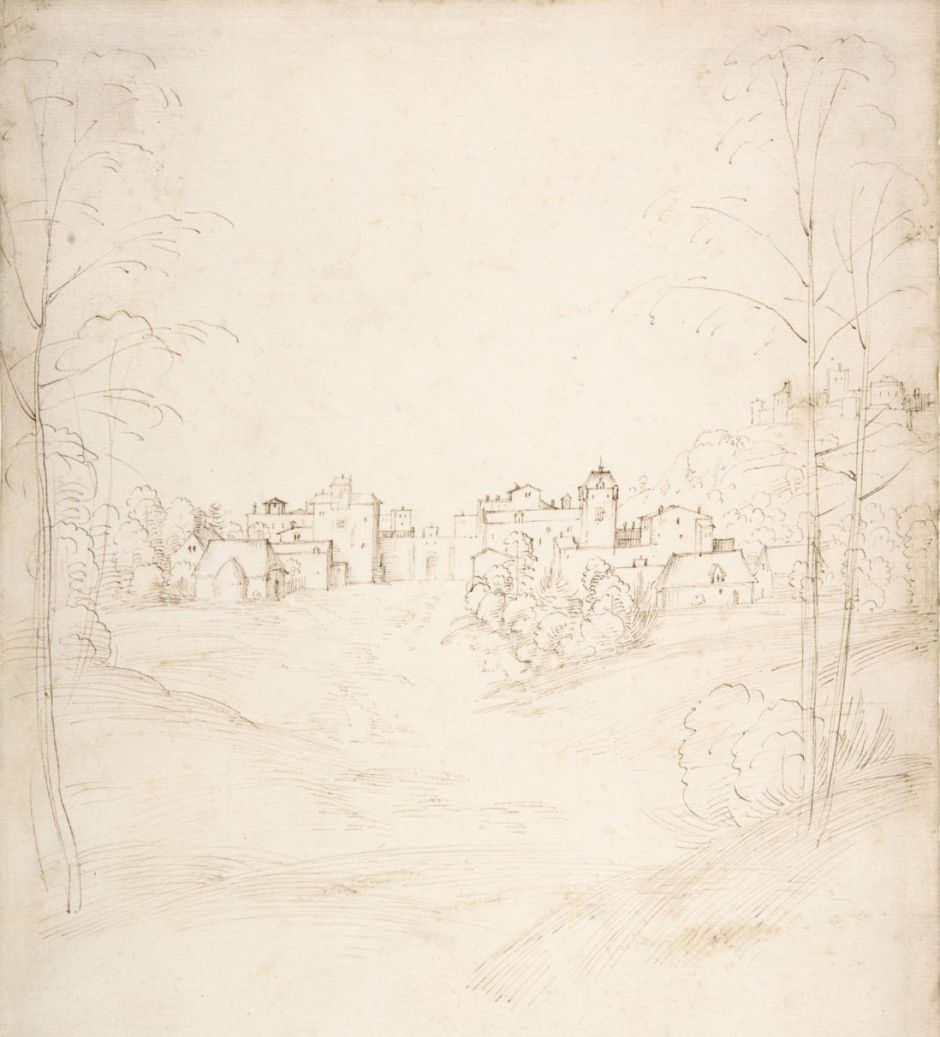
Bartolomeo was innovative in the landscape vignettes which he incorporated into his finished paintings. He seems to have drawn A Small Town on the Crest of a Slope in front of the motif, as a study for its appearance in the background of The Nativity (below), at some time in the years 1504-07.
This is a technique believed to have been used extensively by the great landscape painters of a century later, Nicolas Poussin and Claude Lorrain, and gave Bartolomeo’s landscape passages an air of authenticity. This contrasts with the idealised or dramatised landscapes more usually seen in backgrounds of paintings from the southern Renaissance.
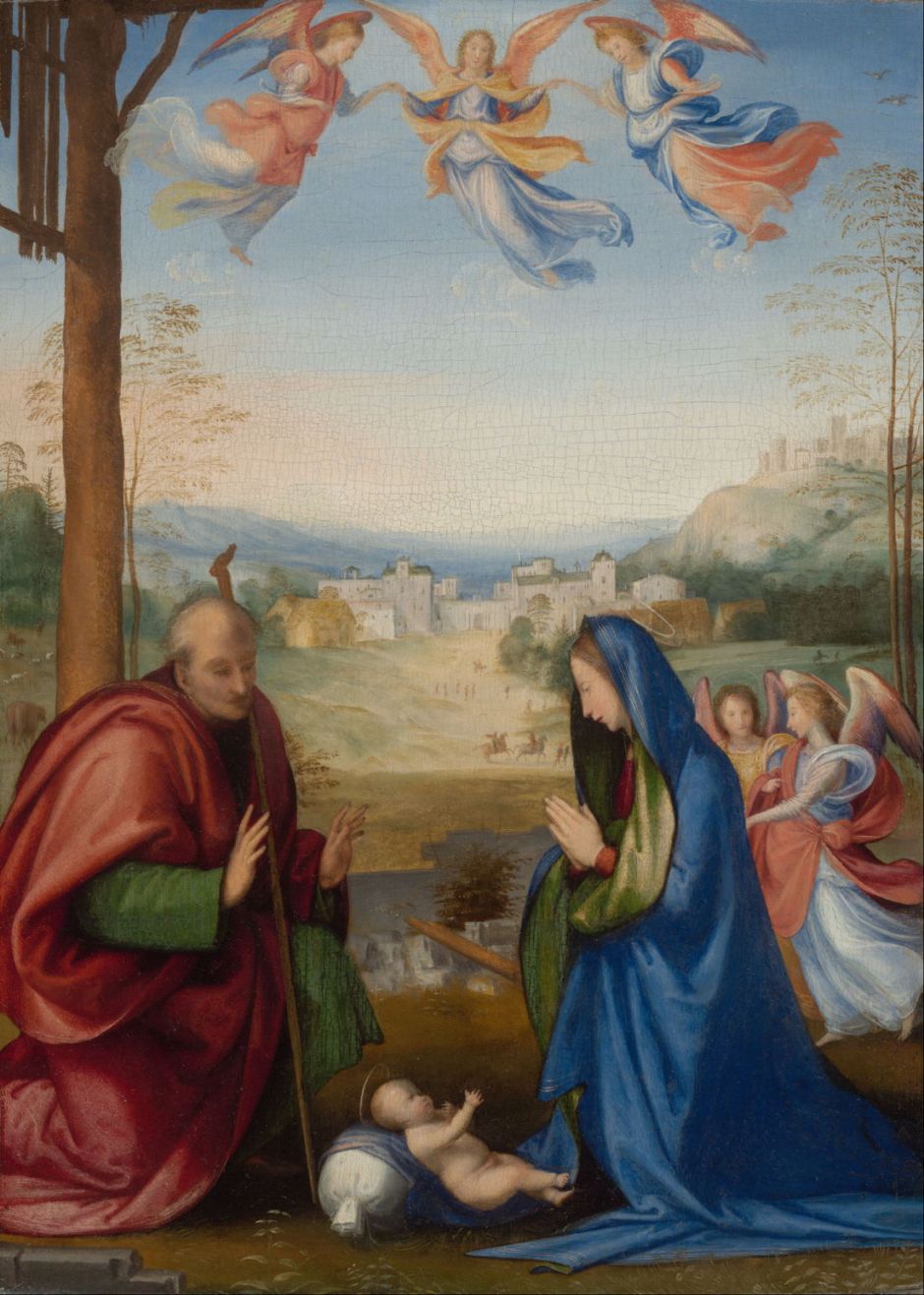
The Nativity (1504-07) uses that landscape drawing for its background. Bartolomeo has populated the middle distance to add interest, and in the foreground is a simple nativity scene based on his fine tondo Adoration of the Child from 1499. He has also added decoration of angels at the right, and in the heavens above.
While Leonardo’s Adoration of the Magi was painted during his transition from tempera to oils, just over twenty years later, Fra Bartolomeo was painting in oils alone. Gone were the multiple fine strokes of quick-drying egg tempera, allowing the artist much greater control in applying fresh paint into previous layers which hadn’t yet dried, and the use of transparent glazes. Preparation of oil paint was more complex, even the exact choice of drying medium was (and remains) something of a black art. In the light of a great deal of scientific research during the twentieth century, the preparation and use of oil paint is little more than alchemy.
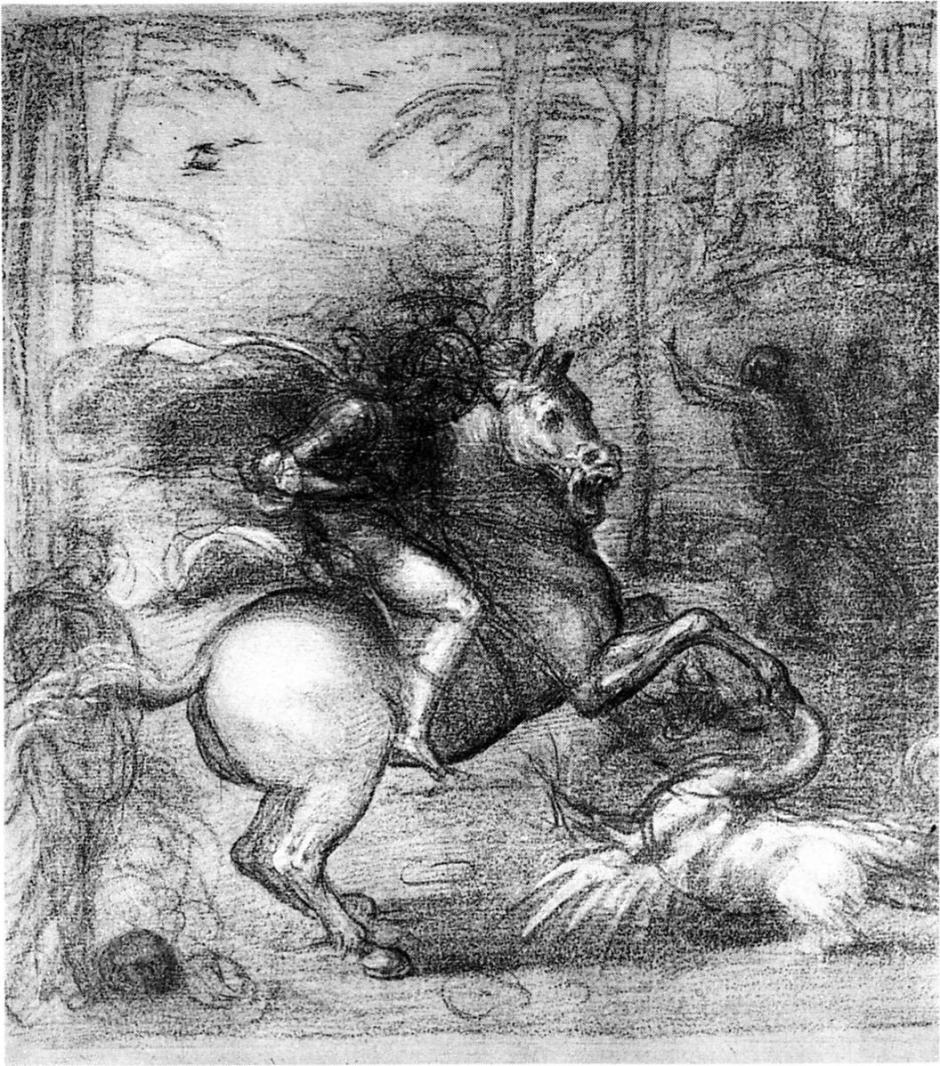
Fra Bartolomeo also made a series of preparatory sketches for a painting of Saint George and the Dragon, which give a good idea of the free expression in studies which were intended to be unseen.
Until the late fifteenth century, when the adoption of new oil-painting techniques and more extensive use of live models allowed, few figures in paintings looked thoroughly real.
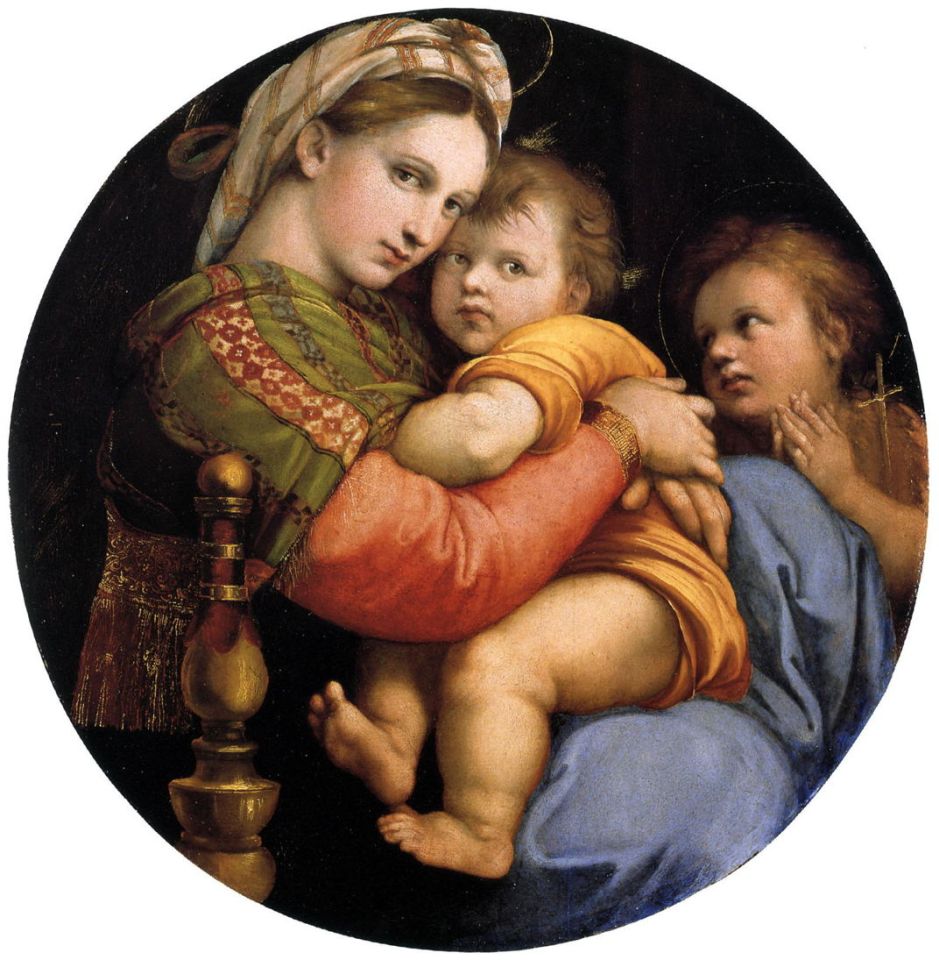
Raphael’s Madonna della Sedia (Madonna of the Chair), from 1513-14, shows a thoroughly real and natural mother with two infants, every surface texture rendered as in life.
By the middle of the sixteenth century, the classical method consisted of the evolution of sketches and studies, with their strong artistic content, then transfer to oil paint on canvas, using techniques which were less about art than craft skills. No matter how technically skilled a painter was, though, the outcome relied on exercising their art in the early stages of the development of each painting.

